PWC WITH TUBES
Rayglass Boats has always been a company that comes up with innovative ideas and its new Protector Projet is certainly no exception. This is no ordinary jet boat and while it delivers all the best attributes of a jet boat and that of a RIB, there’s a lot more, as Barry Thompson found out in this exclusive test.
I have tested hundreds of boats and often I am struggling to find anything remarkably different between one and another. Well, now I have. It has taken a visionary such as Tony Hembrow and his team at Rayglass Boats to give to the world a boat that is completely different. They have redefined the RIB by successfully marrying a PWC and a RIB into one intelligently engineered package. This imaginative perspective is completely new and totally different and once you experience it you’d wonder why no one else thought of it until now.
It is hard to decide which is the host, the PWC or the RIB, as both are equally important to each other. The initial concept for the Projet was as a tender for larger boats, but Hembrow and his team quickly realised that what they were proposing had far reaching possibilities into other areas of boating. While they wanted the convenience and safety of a jet, they were also looking at the RIB to be able to move more people around.
Hembrow explains, “The PWC combined into a RIB just seemed the logical way to achieve what we wanted, with the soft sides, safety and volume of the inflatable boat and the PWC with its jet unit, comfortable drive station and all the controls and instrumentation built into one total package”.
The hull has been especially adapted to suit the Yamaha Waverunner, with a cut-out for the jet intake being the only difference you can see underneath. The full integrity of the Yamaha FXSHO has been kept; the Projet hull has been moulded to the identical shape of the PWC. Effectively there are now two hulls, with the RIB sole bonded around the perimeter of the PWC module.
As with all Protectors, the tubes are built using Hypalon material and feature multiple air chambers, with a number of colour options available. The wide tubes also provide the extreme stability inherent with a RIB, something that you certainly don’t get with a PWC.
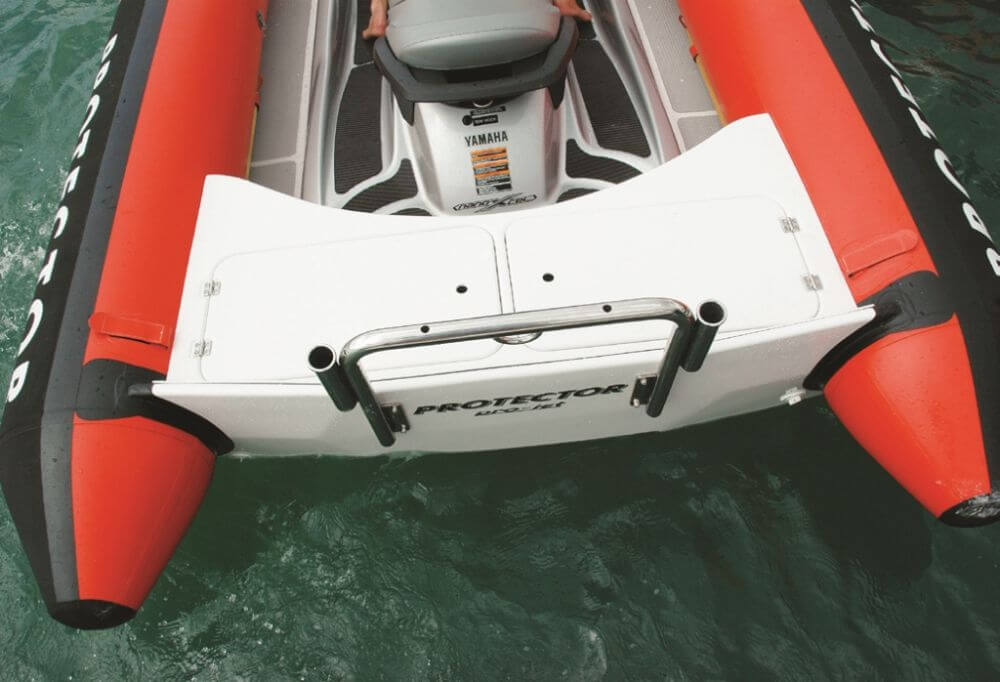

Command Module
The command module for the Protector Projet is a Yamaha FXSHO PWC, powered by a four cylinder, four stroke, supercharged and intercooled engine that runs through a 155mm axial flow jet pump. This is Yamaha’s most powerful production engine and is also used in the FZR models.
With this package the Projet runs around 50 mph, has tremendous acceleration and instant throttle response.
This 1.8 litre super high output engine is the largest ever in a PWC and 300cc larger than any other model. Compact and lightweight, it’s also 45 pounds lighter and packed with power to provide the best acceleration and top speed ever offered in a WaveRunner, all of which works in favour of the new Projet. Earning a 3-star low-emission rating, it is also the only engine in its category optimised to run on the least expensive regular unleaded fuel.
The Projet certainly benefits from all the features offered by using the Waverunner. Yamaha’s exclusive Cruise Assist allows the driver to set and hold a particular engine speed while maintaining a comfortable position with the throttle. Once the speed is set, you can increase or decrease the speed through the simple push of a button. When the throttle is disengaged the system shuts off.

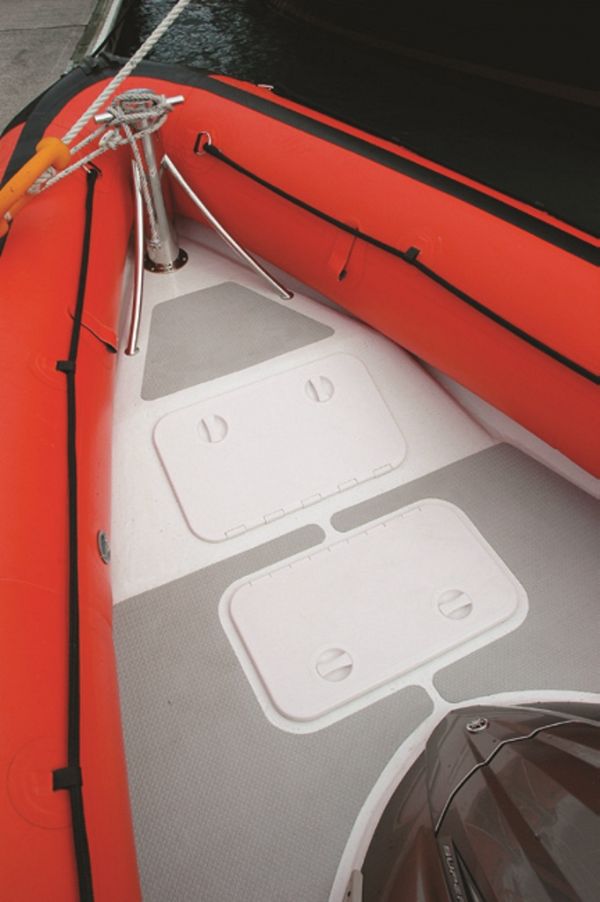
Another neat feature is the No Wake Mode that makes cruising through no-wake zones a breeze. Once engaged, the no-wake mode moves the engine’s RPMs to an optimal speed, approximately 5 mph, for efficiently navigating through a no-wake zone, such as during our test on the Tamaki River.
Once through to the end of the 5-knot area you simply apply throttle and the no-wake mode is released.
Allowing the bow to be trimmed up or down, the Quick Shift Trim System can be easily adjusted to suit your preference and water conditions. Plus to make the driving experience as comfortable as possible, the handlebars can be quickly adjusted by utilising a lever on the steering column. This allows you to adjust the steering column angle from 55 degrees to 35 degrees.
In the extremely unlikely situation of the Projet being overturned, a slant detection switch stops the engine and oil pumps immediately, protecting the motor from unwanted water ingestion. However, under normal running conditions you would find it almost impossible to turn the Projet over.
You have the added benefit of not only a self-draining cockpit, but also the Waverunner also has a built-in automatic bilge pump. Should you have the misfortune to turn the Projet over it’s simply a matter of righting it and you can be under way again. Try doing that in any other boat!
As with almost any jet boat, you can spin it around in its own length at high speed and if your passengers aren’t holding on you may have to go back for them. But turning it over like a PWC? No way! Unless you were caught in a huge side-on wave coming into a beach, I doubt you could get the Projet into any more than a casual lean!
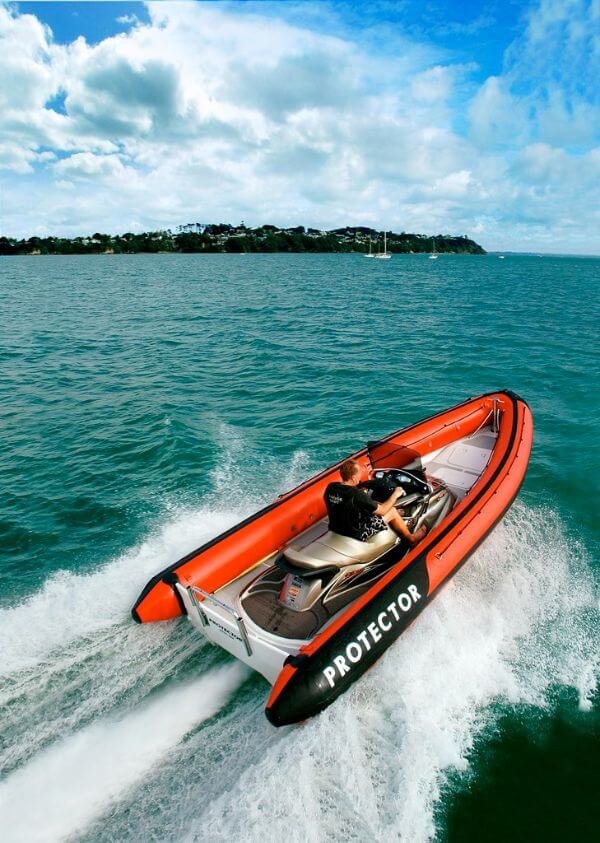

In reverse, the Projet maintains the perfect rpm to provide the optimal speed for accurate manoeuvring, thanks to the traction control technology. A quick-shift trim system offers instant change in the attitude of the Projet while underway, allowing for tighter turns or quicker acceleration on plane. A mechanical system, it provides 24 degrees of total trim range to change the attitude of Projet to suit the conditions.
My first drive of the Projet was one of caution as I got used to the handlebar steering and finger throttle controls. I have to admit to not being a PWC user, so it took me a little time to get to grips with the handling and control. If you are familiar with driving a PWC then you will dial the driving skills in almost instantly and have no problem tossing the Projet around.
However, it didn’t take me long to get the necessary confidence and I soon found myself hooking into hard high speed turns, worrying more about getting wet and staying in the seat. On both accounts I need not have been concerned as the seated driving position is a secure one and I never even got close to losing my grip. As for the spray, well unless you get a bit on you haven’t tried hard enough to round up the boat in its own length.
One word describes driving the Projet – FUN!
Room to Move
The layout of the Projet is very much controlled by the shape of the PWC, with in-line seating for the driver and a passenger behind a centre console. The dash features a couple of small instruments denoting functions such as fuel usage and speed. The acrylic screen does a nice job of keeping off the wind and spray and the dual automotive style mirrors let you see behind – a nice touch if towing skiers, wake boarders or water toys.
The FX SHO module is constructed of Yamaha’s new NanoXcel ultra-lightweight, high strength material that reduces the weight and offers a shinier, gem-like finish. It features two large storage lockers including a watertight bin designed to securely contain items such as wallets, keys and cell phones. Rayglass has added two further wet lockers forward in the sole, as well as a full width bench seat with top opening hatches for gear access aft.
Anchoring tackle is stowed in a sole hatch and the Projet comes with a large stainless steel sampson post as well as a heavy-duty rubber fairlead over the bow.
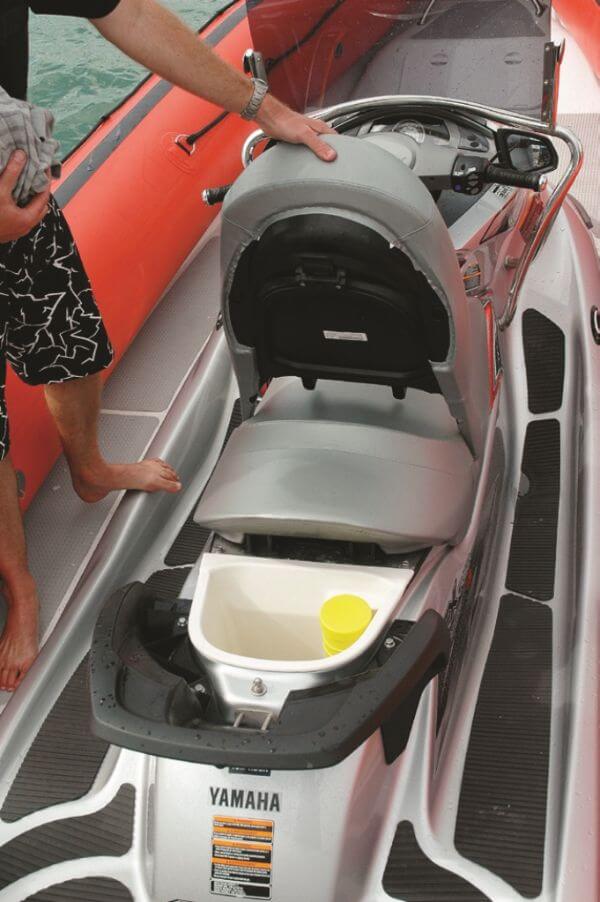
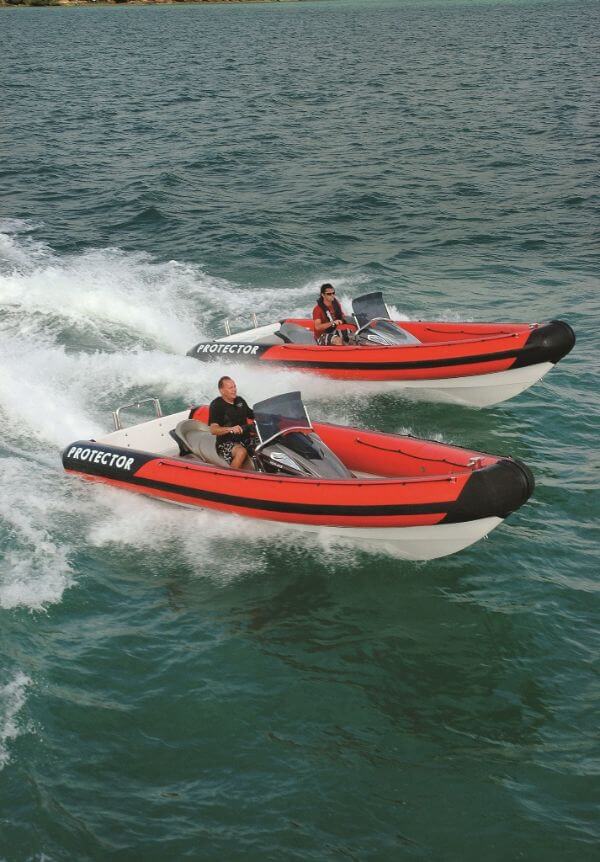
We had two versions of the Projet to play with, one with and one without the rear moulded seat options. While the seat adds two extra seating positions – upholstery optional – it does take away some workable space if you are into diving or fishing. As a soft bait fisherman I appreciated the ability to utilise the whole boat as a fishing platform.
This is also a boat that will find plenty of use as a general all purpose RIB suitable for fishing, diving, towing water toys and its natural home as a super yacht tender. It also has possibilities in the rescue and military markets. Plus, it’s the perfect boat to have at the bottom of the section in places like the Whitianga or Paunanui waterways, Marlborough Sounds or Lake Rotoiti.
Speicifications
- Make: Rayglass
- Model: Projet
- Designer: Rayglass R&D
- Price As Tested: $ 68,500
- Type: RIB
- Construction: GRP/Hypalon
- LOA: 6.10m
- LOH: 5.70m
- Beam: 2.45m
- Deadrise: 20 degrees
- Height on Trailer: 1.57m
- Trailerable Weight: 850kg
- Power Options: Yamaha 1800 Supercharged
- Fuel Capacity: 75 litres
- Performance: 50 mph




